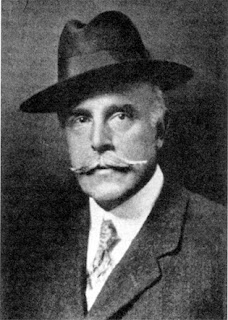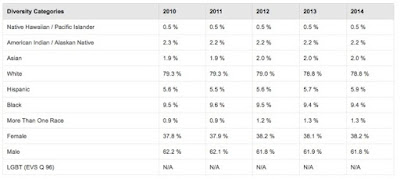 |
| Schindler Factory Brnēnec, Czech Republic panoramio.com |
Halloween is upon us and nothing says scary like a roller coaster presidential election cycle. Beware of emails that pop up out of nowhere and hot-on-the trail Federal Bureau of Investigation directors. Be that as it may, yours truly would like to talk about something other than candidates that go bump in the night.
Today, we turn our attention to the site of one of humanity's most famous acts of salvation. The site is the former textile plant, once owned by Oskar Schindler, in Brnēnec, Czech Republic. It was here that the man, so beautifully rendered by Thomas Keneally's Booker Prized winner Schindler's Ark and Liam Neesom in the 1994 Steven Spielberg movie Schindler's List, saved an estimated 1200 Jewish men and women from certain extermination by the National Socialists. Today, what remains of the plant sits in the Bohemian village Brnēnec (formerly Brünnlitz), abandoned, stripped of its fittings, and in disrepair. Robert Tait of The Guardian visited the plant to report, in his article "Fate of former Schindler's list factory is met with Czech ambivalence," on efforts to turn the Hapsburg-era building into a museum. This site, like many sites of the World War II-era, especially those connected with National Socialism, is problematic not only because of funding costs but also ambivalence toward Oskar Schindler and his ties to the National Socialists.
 |
| Oskar Schindler yadvashem.org |
This is what remains of the place once used to protect nearly 1200 people, whose names appeared on Mr. Schindler's storied list, in the final months of The War. Here was the place where they were transported from his factories in Krakow, Poland in late 1944 as "...on the pretext that they were skilled munitions specialists need to manufacture tank shells for the German war effort." In reality, they were transported by train to prevent them from being sent to the death camps as the National Socialists intensified their extermination activities while the German forces retreated from the advancing Soviet army. We can debate whether or Mr, Schindler was acting out off altruism or not another time but for now, let us focus on this factory.
The Schindler textile plant is at the center of grand plan to adapt into a museum memorializing the late industrialist and the lives he saved. The textile plant continued to operate after The War, producing fabric for Swedish furniture giant IKEA and Škoda car seat cover before shuttering its doors in 2009. Following a protracted legal fight over ownership of the site, it eventually was passed to the Shoah and Oskar Schindler Memorial Endowment Foundation.
 |
| Interior of Schindler Factory Brnēnec, Czech Republic radio.cz |
This is the only Nazi concentration camp in the Czech Republic that is still standing in its original building....You cannot allow it and the whole history of Schindler to disappear. I have been fighting for this for 20 years. But people are just not interested in it...
The neglected former textile plant and what may become of it is similar to that of the one-time Schindler Enamel Factory in Krakow, Poland (below left) which was subsequently rehabilitated as a museum and tourist attraction.
 |
| Schindler Enamel Factory Krakow, Poland flickr.com |
The scheme also faces another roadblock: the ambivalence of the majority of Czechs toward Oskar Schindler. The late industrialist was a Czech citizen from the German-speaking Sudetenland region and a spy for the National Socialist foreign intelligence service Abwehr before the territory was annex by Adolf Hitler under the 1938 Munich Agreement. Oskar Schindler later joined the National Socialists. Thomas Keneally expertly summarizes this in his book. Mr. Keneally also mentions that Mr. Schindler had a reputation as a womanizer, an alcoholic, a gambler, and gauner (Ger. for crook). Therefore, you can begin to understand the disconnect between the Hollywood portrayal of Oskar Schindler's wartime and the realities of his prewar exploits. Even though he and his wife, Emilie, are honored by Yad VaShem Holocaust Memorial in Jerusalem, his prewar reputation persists to this day.
 |
| Oskar Schindler's birthplace Zwittau, Czech Republic tracesofwar.com |
Jitka Gruntova told Mr. Tait,
I have found no evidence of Schindler saving prisoners. I've come to the conclusion he was only saving himself-mostly by writing a postwar synopsis of his alleged activities. I don't doubt there are certain witness statements in his favour but these are, as far as I can tell, made by people who belonged to the inner circle around him.
Svitavy, also the hometown of Jaroslav Novak, has a small municipal museum with a one room exhibition dedicated to Oskar Schindler. Resident historian Radoslave Fikejz attributes this sense of hesitancy to the legacy of the former Czechoslovakia's communist regime and the post-war expulsion of most of the country's German speaking residents.
 |
| The Schindler Room at the City Museum Svitavy Svitavy, Czech Republic tracesofwar.com |
It's a very big problem because we still have 40 years of communism in our mentality...It's also a problem that Schindler was Sudeten-German and people are afraid of one question, which is: what happens when the Germans come back? But this is unrealistic.
Yes Schindler was a Nazi, a war criminal and a spy. But I have met 150 Jews who were on his list and were in the Brnēnec camp and they say that what's important is that they are alive.
Tomas Kraus, the director of the federation of Jewish communities in the Czech Republic, supports the museum plan. Mr. Kraus said,
It's a very complex story...Schindler was a perpetrator who late became a saviour and a hero. But he was not alone in that. There were other like him-he was only the most famous.
British commentator on Czech affairs Tom Gross, whose great-grandparents died in Treblinka opined that the museum initiative should not detract from "...the lack of a state-funded Holocaust memorial, besides the existing shrine at the former Theresienstadt concentration camp 40 miles north of Prague." Specifically,
Prague still has no central Holocaust memorial when it was one of the most Jewish cities in the world and the vast majority of its Jews were murdered...The small local Jewish community is reticent about campaigning for one, perhaps for fear of provoking an antisemitic backlash.






































